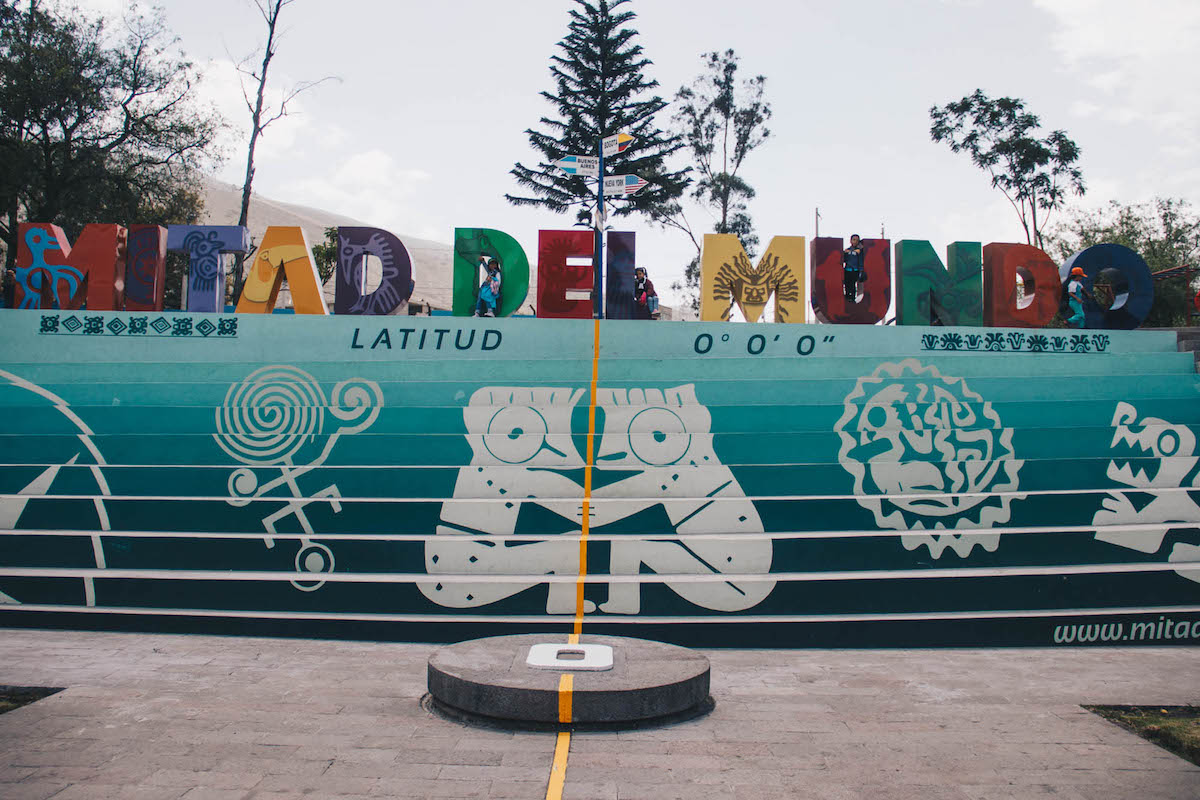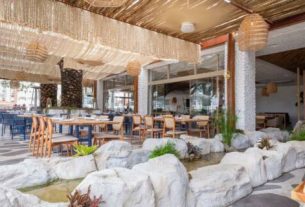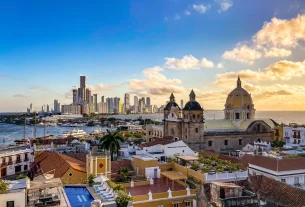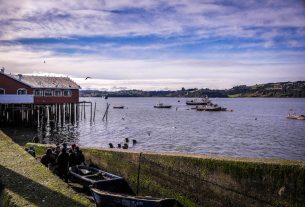Standing right in the middle of the world, one foot on one side of the yellow line, the other on the other, I realized that this was one of the few opportunities I would have in my life to be in two places at the same time. At that moment, half of me was in the northern hemisphere, half in the south. Half in autumn, half in spring. And the yellow paint marked on the ground brought to reality an imaginary line, geographical, but also political.
With more than 40 thousand kilometers, going around the globe right in the place that would be half of it, the Equator line crosses oceans and 13 countries, including Brazil, right there on the northern tip, in the state of Amapá. But it is in Half of the World Park (Parque de la Mitad del Mundo), 26 kilometers from the center of Quito, which we have the pleasure of seeing, interacting with and learning more about.
Read too: Where to stay in Quito, the best neighborhoods to stay
I don’t know how to pose for photos
The country’s relationship with the 0˚ parallel is ancient and even gave it its name. This is because that was the location chosen by a team of French researchers, in the 18th century, to host a series of studies to test Newton’s theory that the Earth was not a perfect sphere. To do this, they needed to compare the curvature of the planet in half of the world with that in the north, in Switzerland. At the time, the Spanish colony was known as the Presidency of Quito, and was chosen as the ideal place because, unlike the other lands crossed by the strip in South America, it was a region with strong European occupation and, therefore, considered by researchers most of the time “civilized” to receive the mission.
During the eight years they remained there, scholars made great advances in understanding the flattening of the planet’s poles. The calculations even influenced the creation of the metric system, which spread across Europe with Napoleon’s conquests. They were also responsible for establishing the latitude 0º 0′ 0″, although there were certainly human people on this team, as the calculations were not precise.
In 1992, 250 years later, another team of French researchers stumbled upon the error: the line that has been painted on the ground of the Half of the World Park since 1979 and that was established by the first scientists is, in fact, displaced by 300 meters. south of where latitude 0º 0′ 0″ actually passes. The curious thing is that it was only in the 20th century, with all the GPS and the technological apparatus, that Western scientists discovered something that the indigenous people who have always inhabited Ecuador had known for a long time: the real line of the Equator passes right over what the people natives there called it “inti-ñan”, or “path of the sun” in Quechua.
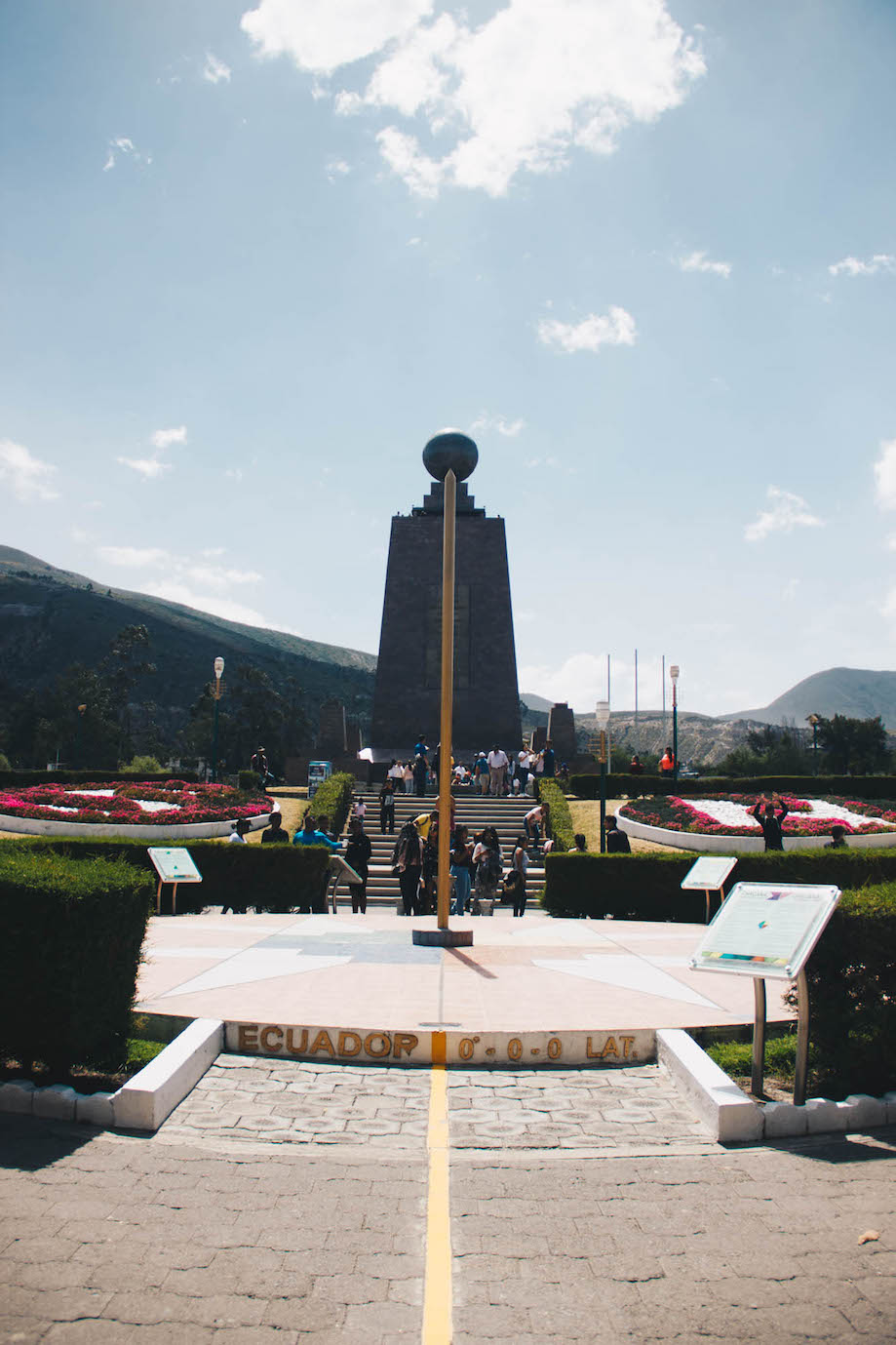
Latitude 0º 0′ 0″, or almost.
But don’t be disappointed by the error: the issue is more symbolic than exact. After all, given the dimensions of the Earth, the Equator is not exactly a line, but a strip that extends for five kilometers. Even with the French’s miscalculation, you can still feel the pleasure of crossing from one side of the world to the other. But if you really insist, the real and official line is marked at the Intiñan Museum (Calle Manuel Cordova Galarza), located close to the park and which can be combined in the same visit.
What to do in Half of the World Park
But then is that it? Is it a yellow line on the ground? In fact, Parque da Mede do Mundo is that typical attraction invented to attract people to a place with potential for tourist exploration. You put a monument here, a museum there, some souvenir shops and that’s it: you have an attraction to call your own.
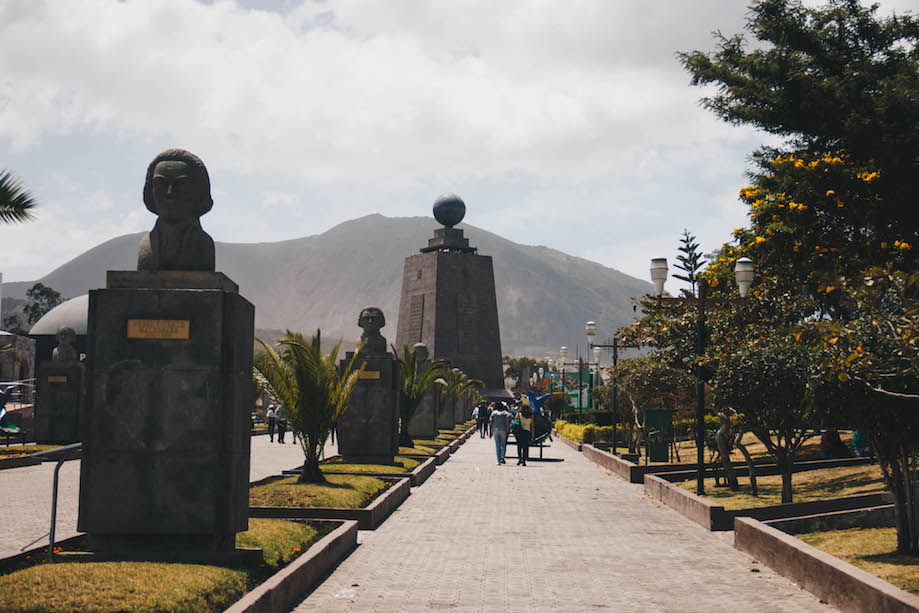
Half of the World Monument and busts of scientists
So yes, there is the Equator, there is the monument halfway around the world, which also marks the four cardinal points and which is at the end of a corridor with the bust of the French scientists from that first mission. Inside the monument, there is a small museum with interesting facts about the indigenous peoples native to Ecuador and a floor with interactive attractions about science. At the top, you can see the entire park and the surrounding region, which is very beautiful, surrounded by mountains. From up there, on clear days, you can see even the closest volcanoes, such as the famous Cotopaxi.
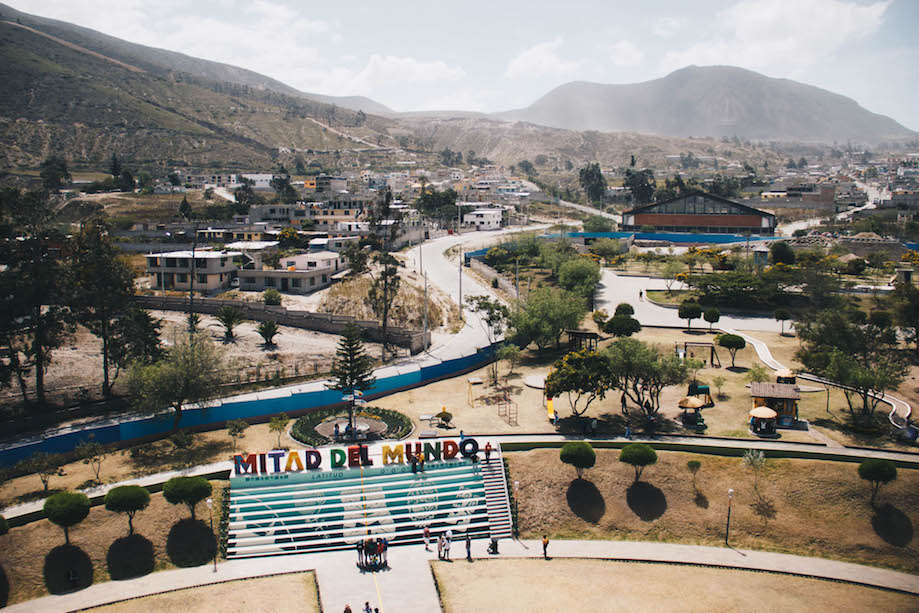
In addition to these attractions directly related to half of the world, the place also has cultural pavilions that value local artists with permanent and temporary exhibitions, including some works by Ecuadorian artist Oswaldo Guayasamín, one of the best known in the country. There is also an arena for small musical shows and typical country dance performances that take place there every weekend.
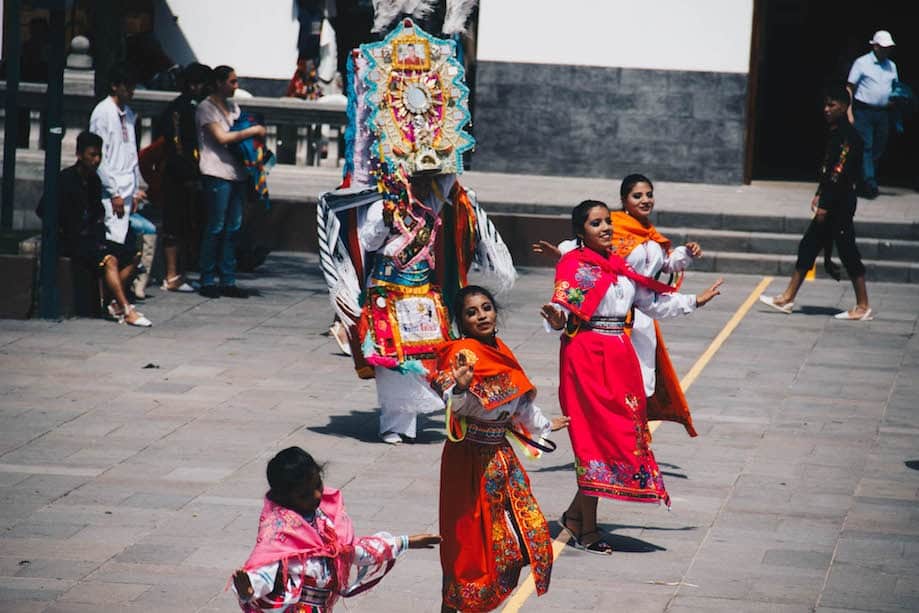
Another interesting area is the Ancestral Dwellings, which reproduces the traditional houses of indigenous people, highlighting the difference between those who live on the coast, in the forest and in the mountains. There is also a planetarium, a chocolate museum and a small museum dedicated to the colonial history of Quito, with a model of the city center in the complex.
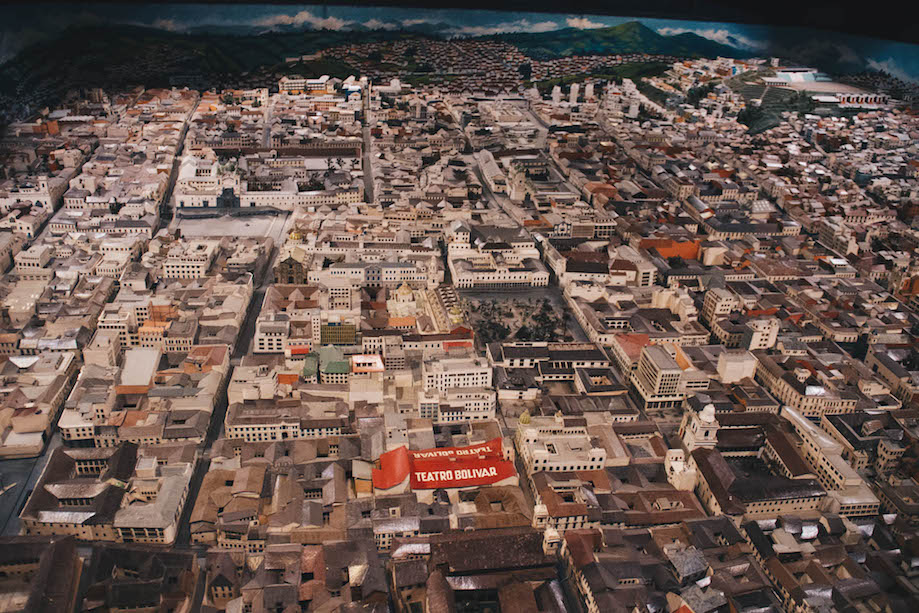
Due to its educational potential, the tour is well worth it for those traveling with children, for curious people and science nerds on duty. On the other hand, if you don’t insist on having your photo halfway around the world, perhaps the visit will disappoint you. A good idea, if you are in doubt, is to plan your visit to the Park after hiking the Pululahua volcano, which is nearby.
How to visit Half of the World Park
How to get
By bus
Leaving La Marín station, in the center, you need to take the Central Norte until Ofelia, which is the last station. The journey takes around 50 minutes and costs USD 0.25. From there, there are buses leaving for the park, but be careful when getting in line as not all vehicles that stop under the “Mitad del Mundo” sign actually go halfway around the world, and I saw people getting into the park. wrong bus because of this. Ask the exchanger before boarding. The trip takes another half hour and costs 0.15 cents. I did the journey this way and it was peaceful.
By taxi
The ride should cost around 20 dollars and takes around 40 minutes. In Quito there is Uber and Cabify, for those who prefer.
Another possibility is to hire a tour organized by agencies, which pick you up and drop you off back at the hotel and usually include visits to the Pululahua volcano and the Intiñan Museum in the tour.
How much does it cost
The entrance fee that allows you to see just the monument costs USD 3.5. The one that gives access to all the complex’s attractions costs USD 7.50. There are more types of passes, such as the one that gives you a bar of fine chocolate produced in the country. Tickets can be purchased on the spot at the complex’s ticket office.
Sign up for our newsletter

Sign up for our newsletter and stay up to date with exclusive news
that can transform your routine!
Warning: Undefined array key "title" in /home/storelat/public_html/wp-content/plugins/link-whisper-premium/templates/frontend/related-posts.php on line 12
Warning: Undefined array key "title_tag" in /home/storelat/public_html/wp-content/plugins/link-whisper-premium/templates/frontend/related-posts.php on line 13

